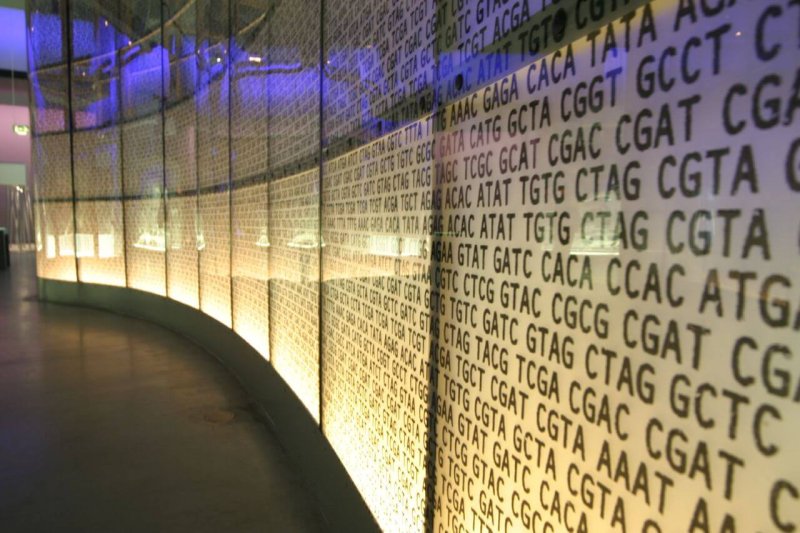According to groundbreaking research in the nascent field of epigenetics, children of mice appear to be able to inherit a learned fear, biologically. Pure nature, no nurture. How they do so is the question probed by Virginia Hughes in a feature for Nature, a follow-up to her writing on research from Kerry Ressler’s lab at Emory University, demonstrating the epigenetic inheritance of a learned response (fear of a specific scent) across generations of lab mice.
The authors of the Nature study controlled for every conceivable non-biological influence. They only induced the fear response in males, so that the inheritance would have to happen through sperm and not through the “nurturing” environment of a mother’s womb. They did their tests using in vitro fertilization so that the offspring would have no behavioral contact with either parent. Still the induced fear response persisted, apparently transmitted through sperm.
But how did this process unfold? “We’re having a hell of time figuring out how [these inheritable effects] work,” Oliver Rando, a molecular biologist at the University of Massachusetts Medical School who studied a similar paternal inheritance effect in mice, told Hughes. His work showed that liver gene expression changed in mice whose fathers had been fed a low-protein diet.
The problem is, despite several promising explanations, no one knows exactly how this phenomenon of transgenerational epigenetics works. There is no well-defined mechanism; researchers so far have mostly been looking at the fascinating end results of a process they don’t quite understand.
Epigenetics on its own is a challenging and exciting concept; the experiences of your life can alter the way your genes are expressed. Until recently, it’s generally been thought that such changes do not actually change a person’s genetic code. Russell Brandom, writing for The Verge, called epigenetics “a running commentary in the margins of your DNA.” Epigenetics closes the perceived gap between nature and nurture.
It’s the inheritance of these epigenetic effects (called “transgenerational” or “cross-generation” or “heritable” epigenetics) that really throws a monkey wrench in our popular concept of evolution and inheritance. As Genetic Literacy Project writer Tabitha M. Powledge noted in her take on the mice study, some have been quick to point out the superficial similarities between the observed effects of transgenerational epigenetics and the much-maligned ideas of 18th century biologist Jean-Baptiste Lamarck.
His famously wrong hypothesis is now a textbook standby: A giraffe wants the leaves at the top of a tree, so it stretches its neck. It passes a slightly longer neck on to its young. Over generations, the necks of giraffes elongate and we end up with an animal with twice the blood pressure of a human just so it can force blood all the way up to its head.
Even Hughes notes in her most recent piece that some of the controversy that has greeted the mice study and work on transgenerational epigenetics in general might be due to the specter of Lamarck. He’s so emblematic of being on the wrong side of revolutionary evolutionary biology, nobody wants to be seen in his intellectual company.
Powledge makes an important point on this topic: Lamarck was talking about evolution, generations beyond counting. The authors of the mice study, and other researchers investigating heritable epigenetics, are only interested in a handful of generations. After which the observed effects seem to, in Powledge’s words, “peter out.” So while cross-generation epigenetic effects may play an unforeseen role in how life adapts to its immediate environment, we do not yet have enough information to up-end bedrock precepts of evolutionary biology.
The list of probable examples of epigenetic inheritance is fascinating. Brandom mentions a study in April 2013 that found children born to mothers who had undergone gastric bypass surgery showed changes in how 5,000 different genes were expressed. Hughes points to a study of Swedish historical records from the mid-2000s wherein “men that experienced famine before puberty were less likely to have grandsons with heart disease or diabetes.”
Brandom adds that, in light of the apparent reality of some kind of inheritable epigenetics, many previous studies that could be written off as “nurture” might actually have epigenetic components that we missed.
In a way, we’re in a similar place here as Lamarck and Darwin were in the 18th century when they advanced their theories: we have a fascinating observed phenomenon (transgenerational epigenetics) and several competing explanatory mechanisms, all met with a bit of controversy. Out of this cloud of interested confusion we got the idea of evolution by natural selection, one of the most revolutionary ideas to ever hit science.
Kenrick Vezina is Gene-ius Editor for the Genetic Literacy Project and a freelance science writer, educator, and amateur naturalist based in the Greater Boston area.































